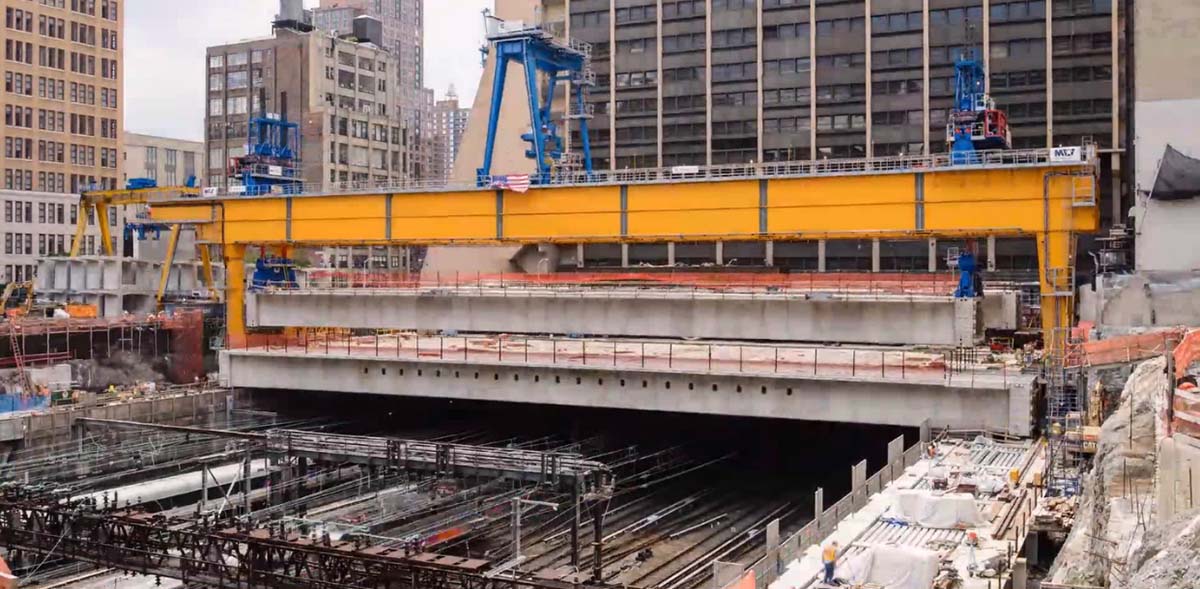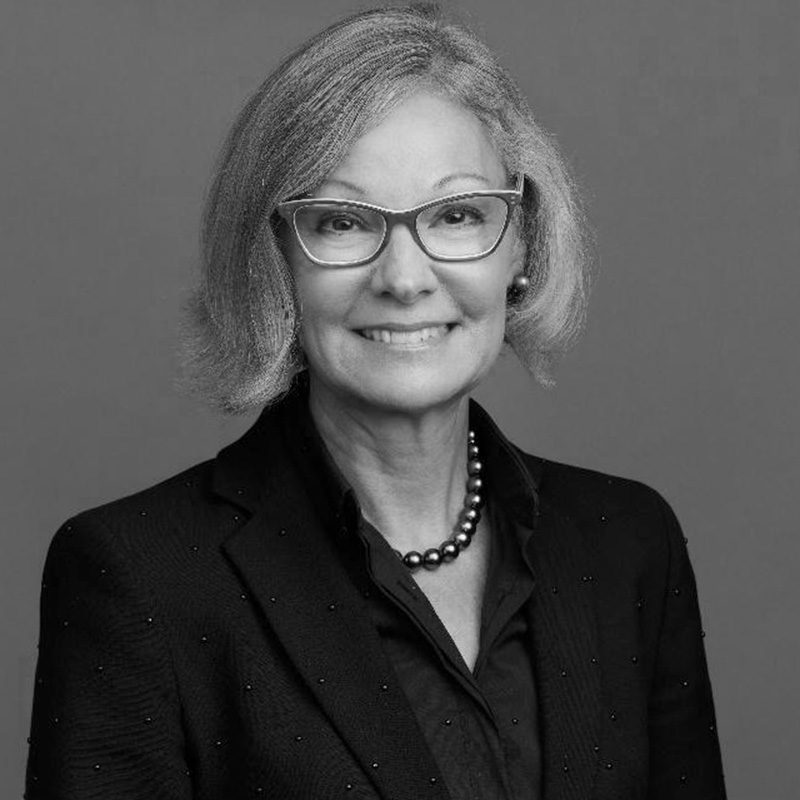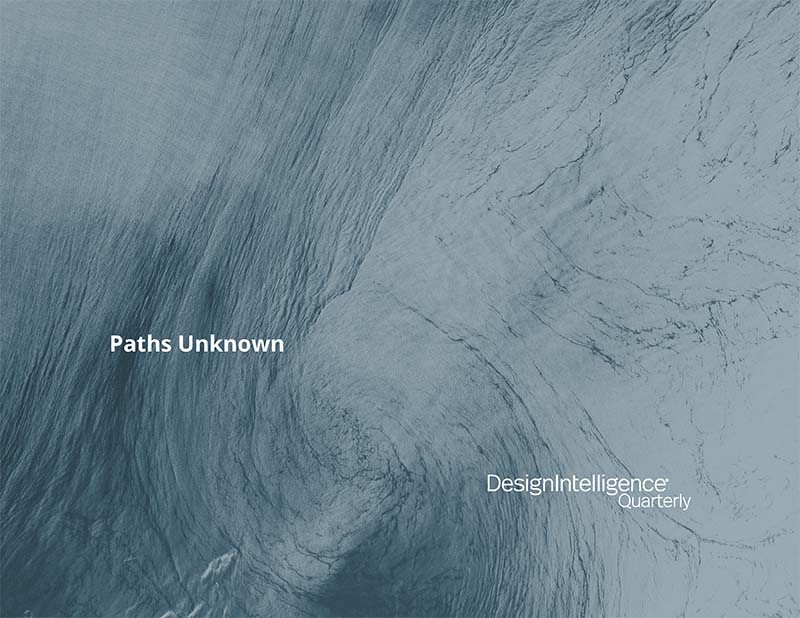Paths Unknown
by Sabrina Kanner
EVP, Brookfield Properties
October 27, 2021
Brookfield Properties’ Executive Vice President Sabrina Kanner explores innovation, value creation, mentors and the costs of not investing
DesignIntelligence (DI): I find your career fascinating. Beginning as an English major and evolving into a business curriculum, then working with a contractor, on to estimating, project management at Olympia & York, then to managing design and construction at O & Y and now your current role managing development, design and construction in the Northeast at Brookfield Properties — a commendable career that is being honored by AIANY at their event, Common Bond. Your five-decade perspective in design, construction and development offers much. Our focus is on innovation. I’d like our conversation to explore some of the challenges you face in development practice today. Is pushing the edge of process an explicit corporate goal?
Sabrina Kanner (SK): Pushing the envelope of results in safety, sustainability, and diversity, equity and inclusion is the goal. Pushing the edge of process is the means to that end. There is no clear path to succeeding at innovation; its very nature requires experimentation and acting on ideas that may not be 100% proven. To do that, you need an open and collaborative environment, the capacity — and permission — to miss the mark on occasion, and, of course, a good team. Innovation is how we gather data, advance into new territory and expand what is thought to be possible.
DI: Where do you see yourself on the innovation spectrum? You mentioned you “try many things” to understand and evaluate what works and how to best use them. For example, new project approaches, low-carbon concrete. You mentioned you’ve had some success with digital twins in their ability to offer feedback loops and performance metrics. Can you share any others?
SK: We are currently implementing power over ethernet lighting and controls to understand better how the system might enhance space utilization and optimize energy efficiency. We have been looking at several technology products in the construction arena that promise to improve safety through recognition of “near-miss” accidents for toolbox discussions and improve schedule adherence through optimizing the floor-by-floor timing cycle. We are also looking at a product that reports on construction deficiencies in real time so they can be corrected immediately, saving schedule and budget.
DI: How do you manage and prioritize such investigations? Trial and error?
SK: With due diligence, spending time to understand a product’s concept, technology and available data, and, often, trying it in the field as a “proof of concept.” If it appears real gains can be realized, we try the product on a project and gather our own data and experiences.
DI: Is it someone’s job to survey the landscape and suggest R&D pursuits? Or is that a collective responsibility? What’s your “innovation risk profile”?

SK: Finding and following innovative products and solutions is a collective responsibility. The team is aware of challenges to be addressed and if a new product presents itself as a promising direction, we chase it down. I am probably most aggressive in the pursuit of new approaches and may have more exposure to new technologies to choose from. I encourage my team to push the envelope on this front. Great ideas have been suggested by design consultants, tech firms and our own subcontractors. All good ideas are welcome. Some are in design or operations, some are in construction. On a recent project in New York, we deployed a custom launcher to enable the work.
DI: You described some of these digital twin and facility management tools as report cards. They provide performance feedback that can be used as a guide for reinvestment. Can you give some examples of how you’ve capitalized on those feedback loops?
SK: Unfortunately, the pandemic, which has hindered occupancy, has also hindered the data gathering needed to provide this reporting, but we are not giving up. Many major markets now have a building performance standard that provides limits of energy usage on various building types and sizes. A significant portion of that energy usage is either residential or commercial tenant consumption and can be hidden within the cost of rent. This is where a reporting or “feedback loop” would be beneficial in informing tenants how they are performing relative to their peers and how they can adjust behaviors to become more environmentally responsible.

Photo credit: Bernstein Associates
DI: As a facility owner and development manager, you’re in position to change the rules of the game. Yet you shared that in some cases you’re not. For example, many lease structures in Washington, D.C., put the burden of energy costs on the owner. Therefore, there is no incentive for tenants to design and build more sustainably. What is your approach to sustainability and innovation in those constrained cases?
SK: That is a perfect example of how putting the technology in place to share information can have a significant impact on energy consumption and carbon emissions, assuming the correct response on the part of the consumer. Many companies are feeling pressure to pursue environmental sustainability goals and initiatives, including sustainable design. By providing more information, we can provide opportunities for them to act on things their employees and clients are increasingly looking for or demanding.
DI: You face different contexts in owning some of your facilities long-term, and trading, flipping or selling others short-term. Are you challenged to juggle these seemingly contrasting development criteria and mindsets?
SK: We take stewardship of all our properties very seriously. Naturally, we have more capacity to embrace innovation and push the edge in some than in others, but we are continually exploring ways to improve the sustainability and operations of our portfolio. It is always more effective when we are in alignment with the goals of a future owner/user, even if only theoretically.
DI: You were honest in saying radical innovation can be a painful and iterative process, something to be done only by a collective, not for the faint of heart. Yet your conviction to push on to solve these more complex, wicked problems is admirable. You shared that you have a top-down company mandate to be carbon neutral by 2050. What drives that belief set?
SK: We have always aimed to have a positive impact on the communities we operate. Now there is more acknowledgment of one’s environmental impact and more of a desire to mitigate it. But our drive to build sustainably goes beyond a stated mandate. We are in the business of value creation. Today, building sustainably is absolutely intertwined with value creation. And, if we didn’t think so, our investors, partners and employees would tell us so anyway. Fortunately, we do think so.
DI: You talk about needing multiple cycles to complete your project learning and feedback loops and that you need to do that in a commercially viable way. Now that we’re developing projects while solving multiple concurrent crises, we have a radically different set of metrics. I know you oversee a large team. Are they conversant in speaking the new language and managing these new multidimensional metrics? We’re not necessarily just about first cost anymore.
SK: I would say two things. First, when it comes to innovation, we all learn the new language together. If you know the right course ahead of time, that’s great, but it’s not innovating. When we are pushing the envelope, we are learning together. That requires an open dialogue. We try to encourage new ideas, and we listen to one another. Second, costs still matter! But we have to recognize and factor in the costs of NOT innovating or NOT investing.
DI: It takes courage to venture into the unknown. With a half-century of perspective, what advice would you share with recent graduates entering the development industry amid the post-COVID era?
SK: Seek out mentors. Care more about finding an open and collaborative environment than a specific job title. Vocalize your ideas and be supportive of others’. And in those first years, gather as much real experience as you can. I also believe in extending yourself to help others; it is beneficial to all when we engage in industry nonprofit work — it exposes you to varied thinking while helping your community and, hopefully, improving the world. In so many cases, I may not have known I was on the correct path, and a mentor helped me see it.
DI: What do you have left to accomplish? Is there a legacy mountain still to be climbed?
SK: I am very proud of what we have built and how. And, as someone who has had some wonderful mentors, I am proud of those I have encouraged and helped along the way. I’ll miss both those aspects of the job when I’m done. If there is a legacy, it’s in the nexus of those two things.
Sabrina Kanner is the executive vice president of development, design and construction at Brookfield Properties, responsible for overseeing development in the Northeast U.S. With Brookfield Properties and its predecessor, Olympia & York, for over 35 years, Kanner has played a key role in the construction, design and development or redevelopment of over 40 million square feet of signature Brookfield projects such as World Financial Center, Brookfield Place, 300 Madison Avenue, Halley Rise, the restoration/renovation of the Winter Garden at World Financial Center after 9/11, and Manhattan West.
Kanner holds a B.A. from Union College and is a member of WX and the National Academy of Construction. Additionally, Kanner sits on the board of directors of the New York Building Congress (vice chair), the Salvadori Center (chair), the Regional Plan Association, Urban Green Council (chair-elect), the Beverly Willis Architecture Foundation, Cedar Realty Trust and the Opus Group.


